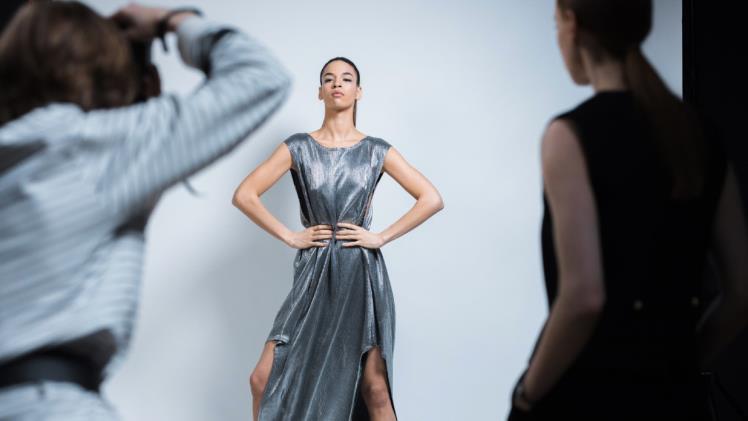Fashion and photography is a collaborative effort. Working together as a team strongly predicts how well a photoshoot will go. Even the most talented and experienced models will need effective direction from everyone behind the scenes. A shared understanding between the photographer and model will permanently set the stage for a successful shoot that everyone can be happy about.
Concept and Mood
A mood board is a good way to showcase the mood and feel of the photoshoot. It can be a collection of other images showing what the brand is going for and what it ultimately wants to achieve. This will help the model understand why they were chosen and what is expected from them in terms of poses, expressions, and attitudes.
Building Rapport with Your Model
Take some time to know your model to grasp their model personality. Understand their likes and dislikes. This will make both of you comfortable during the photo session and make it more possible to get the best work out of them.
Conveying the Desired Persona
Whether it’s anger, excitement, or seduction, the model’s state of mind will come across in her body language and facial expressions. As a director, your job will be to have them immerse themselves into this character. In the end, it’s the model’s character that will bring the brand to life.
Poses and Facial Expressions
Take into account the model’s body proportions, symmetry, and body position. Before you initiate the photoshoot, carefully observe the model’s distinctive features. Then, guide them into good poses that not only flatter these features but also embellish the entire outfit.
Different Models Means Working with Different Personalities
Each model brings a different type of energy to a photoshoot. Some models may prefer a gentler and calmer approach, while others may be more energetic and prefer more excitement and enthusiasm. During your initial conversations with the model, ask them about their preferred style for direction so that they feel entirely comfortable.
Poses
Encourage your models to move around between shots to prevent a stiff or unnatural appearance. Encourage them to practice poses in front of a mirror and find inspiration from magazines, editorials, other models, and other model photographers, as well as anywhere else they can find inspiration.
Posing the with Clothes
Consider the types of outfits the model will be wearing. Is it a flowy, bohemian outfit? Or is it a tailored suit? While one may call for a more carefree attitude, the other will demand a more confident pose. While it’s the model who’s wearing the outfit, the photographer’s direction will bring it all together and highlight the most unique aspects of the clothes.
Maintain a Comfortable Work Environment
Make the entire experience as comfortable as possible for your model and the rest of your team. Provide water, refreshments, snacks, and a laid-back environment. Take breaks together and talk about your favorite subjects. In a nutshell, you want everyone to loosen up a bit while still staying professional.
Dealing with some Hiccups During the Session
Fashion shoots may introduce a variety of photography challenges. Nonetheless, these challenges can be navigated and overcome with adept strategies and preparation.
Dealing with Slow Strobes
When working with continuous studio strobe lights with a slow recycling time of around 5 seconds, you might miss some gold moments. Choosing a lower-power studio strobe or using flash guns can give you a quicker recycling time to get the shots you need.
Managing the Client
At times, the model might feel pressure from a client watching the shoot. This is your moment to be reassuring and let them know to trust your vision and direction. For this reason, everyone, client included, must constantly communicate during the process, even before the photoshoot date. If the model feels reassured, they will be more likely to feel comfortable and deliver their best performance.
You can probably understand that great direction depends on great communication. As photographers, we are just more than someone who takes pictures. We take on multiple job roles: photographer, editor, and director. A model will only be as good as the direction you give them.

